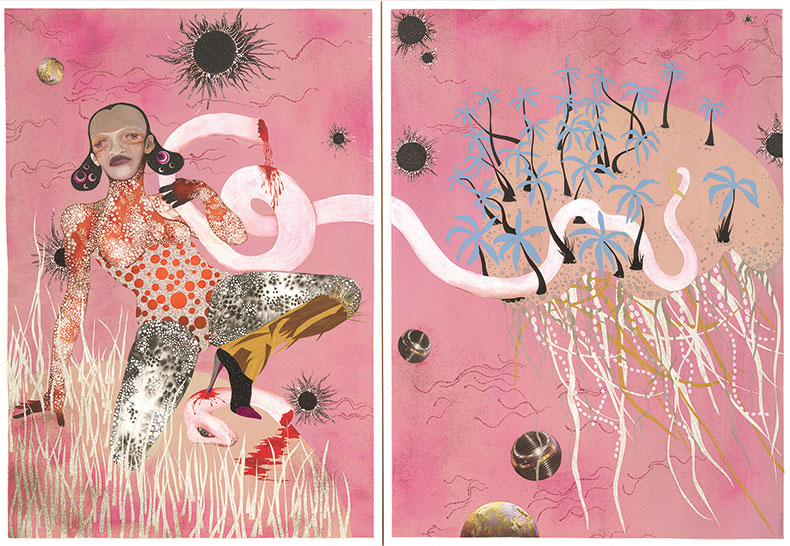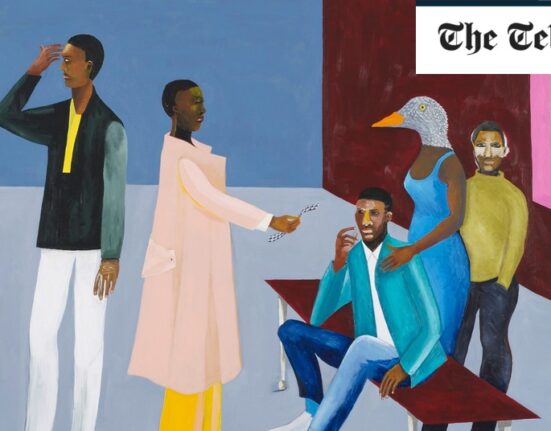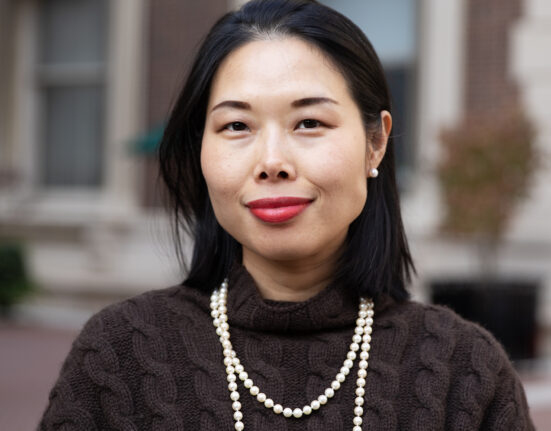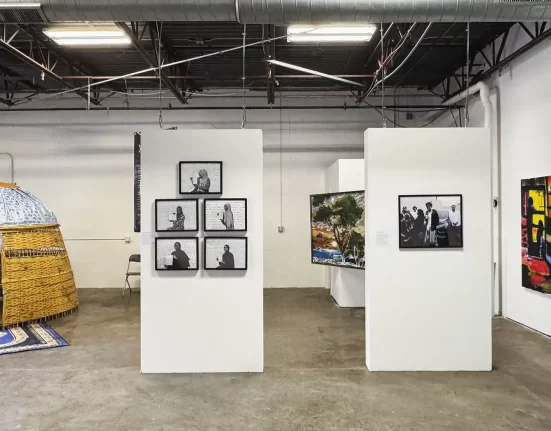Hybrids of every imaginable kind appear throughout her oeuvre. At the New Museum, two women-trees with roots for feet and leaves for heads sat companionably beside cafe-style tables and chairs in the lobby. In the galleries upstairs, artworks featured hyena-headed figures with snakeskin legs; a flying snake with an elephant’s body; women with wheels or mushroom stalks in the place of limbs. Sculptures such as MamaRay and Crocodylus (both 2020) depict imagined goddesses – chimeras of women with, respectively, a manta ray and a crocodile – which draw on references ranging from the zoomorphic deities of ancient Egyptian mythology to the nguva, a seductive sea-woman from East African folklore. ‘Among the reasons Mutu’s work resonates so deeply is in its expansiveness, multiplicity, uncontainability,’ Vivian Crockett tells me. ‘It acknowledges specificity but defies containment, and emphasises the interconnectedness of our histories, cultures and struggles.’

Yo Mama (2003), Wangechi Mutu. Museum of Modern Art, New York. Photo: Robert Edemeyer; courtesy the artist and Vielmetter Los Angeles; © Wangechi Mutu






